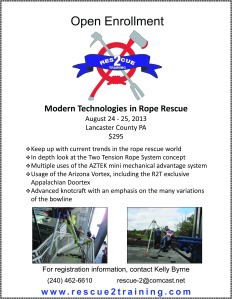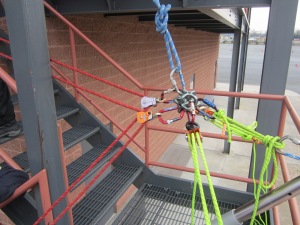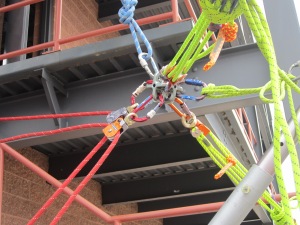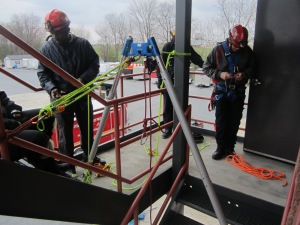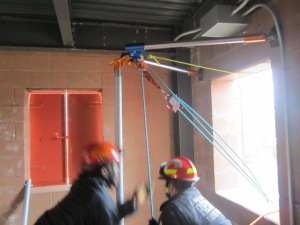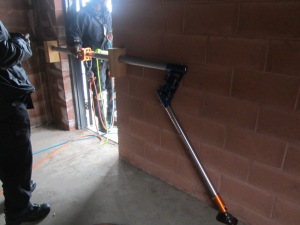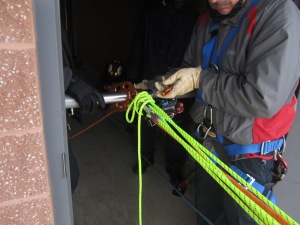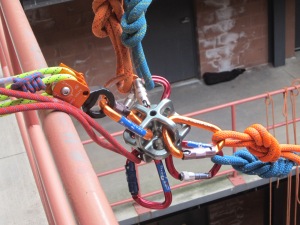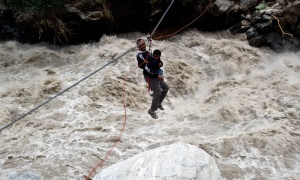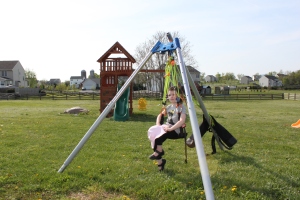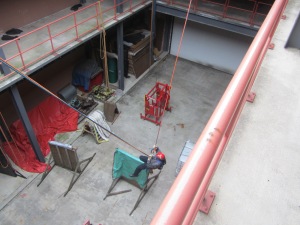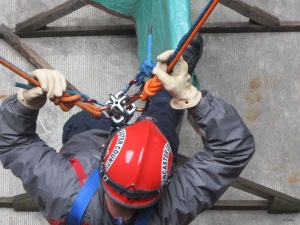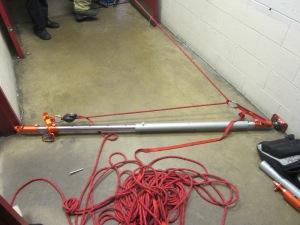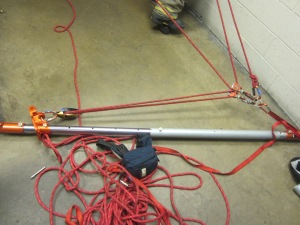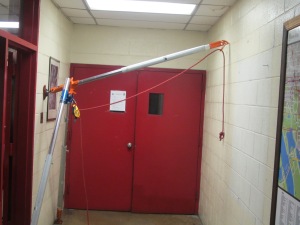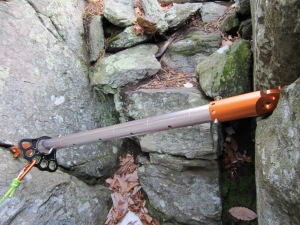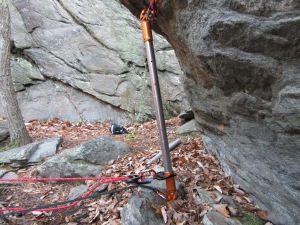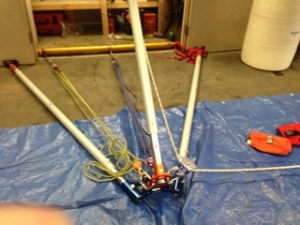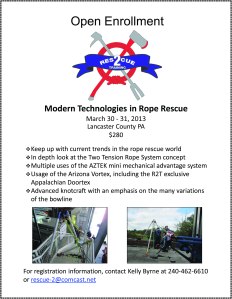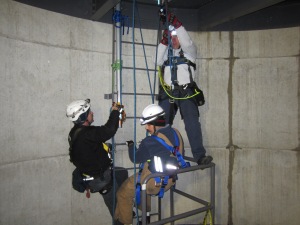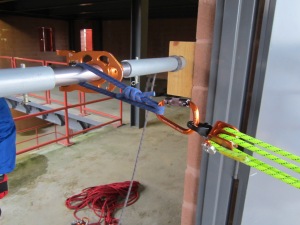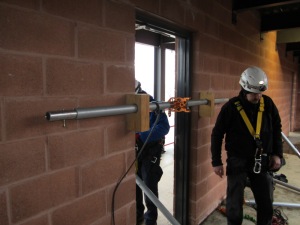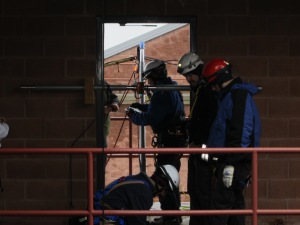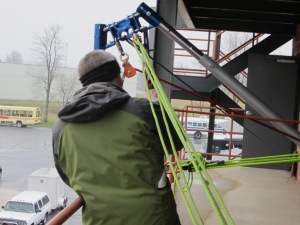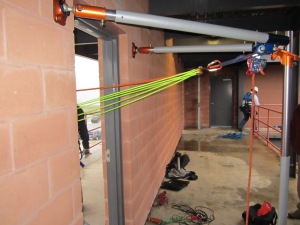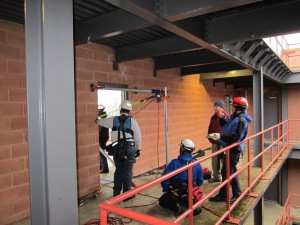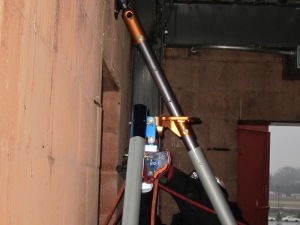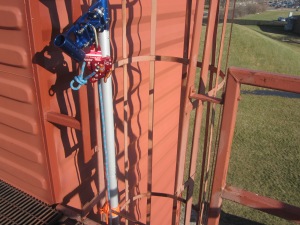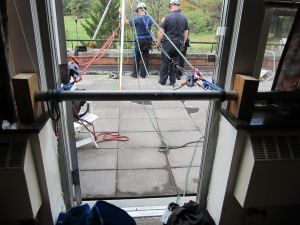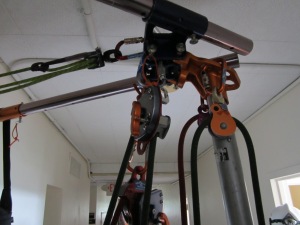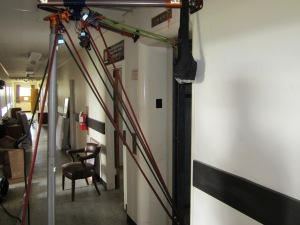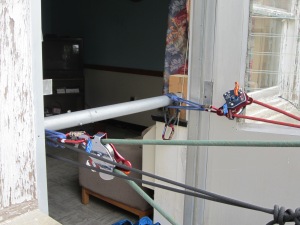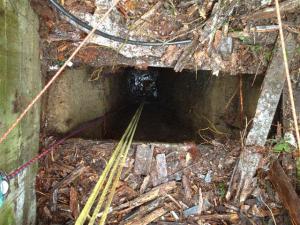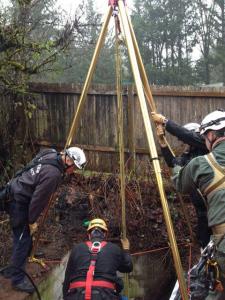Enrollment is now open for our Modern Technologies in Rope Rescue. The class will be held August 24 and 25 at the Lancaster County Public Service Training Center in Lancaster County, PA at a cost of $295 per student.
This class covers multiple versions of the bowline along with some pretty god reasons to consider them, several uses of the AZTEK kit, a thorough introduction to the Two Tension Rope System concept with the MPD, and the use of the Arizona Vortex Artificial High Directional in some pretty typical urban setup configurations as well as some Rescue 2 Training exclusive uses of it in a few of the Appalachian Doortex configurations. As you can see in the pictures below from our last class, we did a good bit of work with the Rock Exotica UFO. One particularly challenging and fun scenario was to change the direction of our main and belay lines 180 degrees on an anchor that was free floating in the middle of the stair landing. There was also some excellent use of the UFO to simplify the rigging of a Two Rope Offset.
In addition to the Arizona Vortex, Appalachian Doortex, MPD’s, UFO’s, and AZTEK’s, we’ll also have available for use in this class three new products (some not even on the market yet) from Rock Exotica:
The little brother of the UFO; the rockStar.
The Enforcer load cell; which features swivels at both ends, a digital readout, and Bluetooth transmitting capabilities!
The AZORP (Arizona Omni Rigging Pod); an add on used to increase the already amazing flexibility of the Arizona Vortex.
Here are some pictures from our last MTRR class; we did some heavy duty 3D rigging along with some urban AZV usage:
This class is different each time we run it and we’ve developed new techniques each class with input and ideas from the students. If you’re interested in seeing and helping develop what’s on the cutting edge of rope rescue equipment and techniques, contact Kelly to reserve a spot in this popular class. Call 240-462-6610 or send an email to rescue-2@comcast.net

